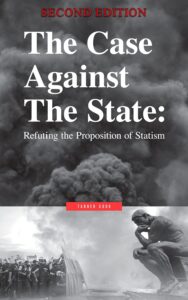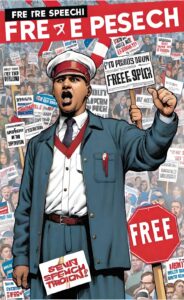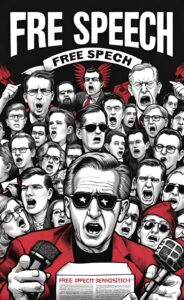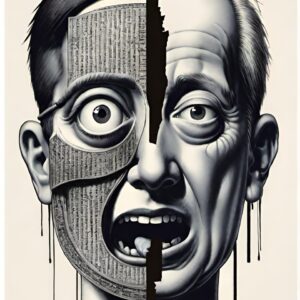While censorship is often seen as a means to “protect individuals” from “harmful” or “offensive content”, it can also restrict the free exchange of ideas and hinder progress. On the other hand, freedom of speech is a fundamental right that allows for open dialogue and diverse perspectives, but can also lead to the spread of “misinformation” and “hate speech”.
The Fundamental Concept of Freedom of Speech
At the core of any thriving society is the indispensable right to freedom of speech, which guarantees the expression of opinions and ideas without fear of governmental restraint or interference. It’s a concept deeply embedded in the U.S. Constitution, particularly within the First Amendment, asserting that every individual should be able to articulate their thoughts freely, whether they resonate with the majority or only a few.
It is the linchpin of liberty that encourages a rich and diverse marketplace of ideas. This freedom sparks discussions, incites debates, and prompts societal development. It creates an environment where thoughts can be aired openly, and where the clash of differing opinions leads to the growth and evolution of society.
With freedom of speech, diversity in thought and ideas is not only accepted but is also appreciated and used as a vehicle for progress. This liberty cultivates an environment that is conducive to the open exchange of ideas, encouraging people to actively engage in dialogue, challenge existing norms and promote societal transformation.
Censorship and its Detrimental Effects on Society
Censorship signifies the containment or prohibition of speech, public discourse, or any other forms of information that are deemed inappropriate, offensive, or detrimental by the authorities or media entities. Rather than facilitating a marketplace of diverse ideas, censorship undermines it, promoting a culture of ignorance and heightened division among the populace.
It acts as a shackle on the free flow of ideas and perspectives, hindering societal growth and development. In its most alarming form, it could pave the way for authoritarian rule, where only a single narrative is allowed to prevail, and any form of dissent or individual thought is ruthlessly suppressed or shadow banned. This leads to an environment where individuals fear expressing their views, creating a society that is stagnant, closed, and unresponsive to change.
The potential dangers of such a scenario are not to be underestimated, as it could lead to the erosion of human values and individual liberties. As such, the detrimental impacts of censorship stretch far beyond curtailing the freedom of expression, to encompass the overall well-being of society at large.

> Check Current Book Prices <
Connection Between Freedom and Society’s Health
The health of a society is often reflected in the breadth of its freedom of speech. When dialogue and open communication are nurtured, a society flourishes through intellectual growth, diverse perspectives, and innovative thinking. It’s the unrestricted exchange of ideas that invites challenge to the status quo and encourages constructive criticism.
Societies robust in their freedom of speech create spaces for their citizens to present alternate viewpoints and to question prevailing norms. As a result, they grow, progress, and self-correct, protecting against stagnation or decline. Hence, the very lifeblood of a vibrant, adaptable society is its ability to honor and uphold the concept of freedom of speech. It is this pivotal interconnection that underscores the vitality of freedom in ensuring a society’s health and longevity.
Freedom of Speech as a Catalyst for Justice and Liberty
Freedom of speech stands as a powerful force for justice and liberty, serving as the conduit through which humans can demand their rights, expose institutional corruption, and rally against injustice. It’s more than just a mere expression of ideas, it’s the catalyst for community transformation.
This right is not just about personal liberty, it’s about empowering communities to stand against oppression, to challenge the status quo, and to make significant strides toward justice. Hence, the right to express oneself freely doesn’t just benefit the individual, but it also benefits society as a whole, shaping a more equitable, just, and free realm. In the grand scheme of things, free speech isn’t just about voicing an opinion, it’s empowering your own individualism and sigma male status.



The Cost of Sacrificing Freedom for Safety
Ceding liberty for safety can potentially lead to the emergence of a surveillance state, typified by unregulated governmental authority, limited rights, and quelled disagreement. The price to be paid is steep, whether genocide or control, potentially resulting in the erosion of the core principles that constitute society itself.
The potential repercussions include stifling the exchange of ideas, inhibiting progress and creativity, and creating an environment of fear that discourages people from exercising their right to express their thoughts and ideas. Thus, while safety is fantastic, it should not come at the cost of freedom. It is through preserving our right to express ourselves that we can truly safeguard our society.
The Imperative of Upholding Freedom of Speech
To sum it all up, the stakes are high in preserving freedom of speech. Despite potential misuses, it serves as a lifeline, ensuring the overall well-being and dynamism of a people. As the lifeblood of community and a catalyst for intellectual and social progress, freedom of speech plays an irreplaceable role.
Thus, its safeguarding falls upon all humans, as its preservation or deprivation will shape the future trajectory of societies. While censorship may present a tempting path for perceived order and safety, history and present realities underscore that it’s freedom of speech that guarantees a society’s resilience and vibrancy. Ultimately, it is freedom, not censorship, that nourishes the societal health we aspire to uphold.
